
Recently on Cyclingnews.com |
2009 Spring Classics
March 21: Milano-Sanremo
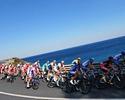
|
The Milano-Sanremo is the first of the Spring Classics and the longest race of modern day cycling, at 298 kilometres. The sprinters have chance to shine in this race from Italy's fashion capital to the Ligurian seaside town of Sanremo.
Take note of the Le Mànie, Cipressa and Poggio: these climbs typically break up the race by sending the weak sprinters out the back door and allowing the attacking riders to launch a move. If a group makes it to the line expect to see a fascinating bunch gallop along Lungomare Italo Calvino.
The Milano-Sanremo, the first of only five Monuments, celebrates its 100th anniversary this year.
Main site - Start list - Map - Results - Photos
March 29: Trofeo Alfredo Binda - Women's World Cup #1
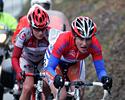 |
The Trofeo Alfredo Binda kicks off the Women's World Cup, marking the first time since the series' inception in 1998 that it has started in Europe due to the cancellation of the traditional opener in Australia. The course around Cittiglio dates back to 1974, and is certainly proved itself worth of an elevation to World Cup status last year. The course has two long circuits with a double-decker climb that rises two hundred meters to Brinzio, followed by a short descent and a shorter kick up to Orino before a long descent back to Cittiglio.
The same crest at Orino is approached from a different direction on the three short circuits that make up the final 60km, and the climb proved to be the launching pad for last year's champion, Emma Pooley, to escape and build an unassailable lead with 40km to go. It was an unusual outcome for a race which has historically been decided on the final lap, where the final trip up the climb inside the final 5km is the usual spot for the winning move to form.
Main site - Start list - Map - Results - Photos
April 5: Ronde van Vlaanderen/Tour of Flanders

|
The Ronde van Vlaanderen is a sacred race in Belgium's Flanders thanks to its past winners and demanding parcours. Hard men shine through this race typically hit with snow, wind and/or rain, men like Rik Van Looy, Eddy Merckx, Roger De Vlaeminck, Tom Boonen and Alessandro Ballan.
The race takes in a series of hellingen in its route through west Belgium. Climbs that usually feature are the Oude Kwaremont, Taaienberg, Kapelmuur and Bosberg. They are not the long ascents that you find in the Grand Tours, but short and steep buggers and often they are accompanied with pavé.
The Classic is the first of the true Northern classics and the second of cycling's five Monuments.
Main site - Start list - Map - Results - Photos
April 8: Gent-Wevelgem
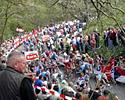
|
Gent-Wevelgem is a mid-week "sprinters' classic" known for its climb and dicey descent of the Kemmelberg. The cobbled Kemmelberg is repeated twice, but it is not usually enough to stop the fast men from winning.
Part of the parcours takes in Belgium's North Sea coast line, which means high winds that shatters the peloton into bits. This combined with the Kemmelberg means that only hardened sprinters remain for the finale in Wevelgem, riders like Oscar Freire, Mario Cipollini, Tom Steels, Sean Kelly and Freddy Maertens.
Main site - Start list - Map - Results - Photos
April 12: Paris-Roubaix

|
There is no other race in the world like the Paris-Roubaix. The French race is known as the Hell of the North thanks to its torturous pavé sectors and the many stories of pain and destruction that they hold.
Dreams of riders like George Hincapie and Johan Museeuw have ended in tears along the roadside, but the risks make the victory in velodrome that much sweeter. After 260 kilometres, around 50 on pavé, the race ends with one and a half laps on Roubaix's outdoor track.
Win in Roubaix, the third of cycling's five Monuments, and you are considered a god. Riders like Fausto Coppi, Rik Van Looy, Eddy Merckx, Francesco Moser, Sean Kelly and Tom Boonen have tamed Paris-Roubaix's pavé for the well-earned status.
Main site - Start list - Map - Results - Photos - Features
April 19: Amstel Gold Race
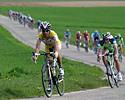
|
No other race is like the Dutch Classic Amstel Gold Race: twisty and narrow roads, short and steep climbs and crazed orange-clad fans. The first of three Ardennes Classics is a race to watch and one for the riders to add to their palmarès.
The realitively new classic (this year celebrating its 44th year) starts in Maastricht and ends with three different circuits on the Cauberg. The first two times up the 1.5-kilometre climb splits the race into select groups, while the final ascent decides the race winner.
Home team Rabobank goes all out to make its presence felt in this race, but in recent years it has fallen short of the victory. Italians have made this race theirs since Erik Dekker last won for Rabobank and The Netherlands in 2001.
Main site - Start list - Results - Photos - Map
April 22: La Flèche Wallonne/Women's La Flèche Wallonne
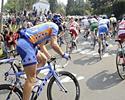
|
Belgium's Flèche Wallonne is a mid-week race with a short distance of 200 kilometres, but that does not change the importance of this race that always ends with spectacular explosions on the famed Mur de Huy. The climb is a 1300-metre leg-snapping ascent that averages 9.3 percent gradient and boasts a maximum of 25 percent.
The second of three Ardennes Classics starts at a leisurely pace in the Walloon city of Charleroi, but it ends with two rings of fire (if you will) around the city of Huy. The riders top the Mur de Huy the first time to start the smaller circuit that ends with Huy. From there it is all positioning for the final larger circuit: Côte de Peu d'Eau, Côte de Haut-Bois, Côte de Thon, Côte de Bonneville, Côte de Bohissau, Côte de Ahin and Mur de Huy.
Riders need to be in the front 15 for the Mur de Huy. Then, whoever wants to win needs to wait to the last three-hundred metres to light his dynamite. A well-timed blast will produce a victory, but an early move will mean you are gasping for breath on the fan-lined Mur.
Men's: Main site - Results - Start list - Map
Women's: Main site
- Results - Start
list - Map
April 26: Liège-Bastogne-Liège

|
Liège-Bastogne-Liège ends the run of Northern Classics that started with the Ronde Van Vlaanderen and settles the week-long Ardennes Classics supremacy battle. It packs numerous côtes on the out-and-back run from Belgium's city of Ans, just south of Liège.
On the return journey to Ans, the favourites will start to move forward in the pack. One of the toughest battles will be waged on the 2.1-kilometre La Redoute, coming at kilometre 226 and 35 kilometres from the finish. La Redoute will be an indicator of how the race will continue to unfold over the three following côtes of Sprimont (-29km), Roche aux Faucons (-19.5km) and Saint-Nicolas (-5.5km).
The finish to Ans is not considered one of the official climbs, but it rises steadily over the final two kilometres.
La Doyenne ('The Grand Old Lady') is the fourth of cycling's five Monuments. The fifth Monument, Giro di Lombardia, comes almost six months later.
Main site - Results - Start list - Map
Related articles
Spring Classics: Bartoli holds court
